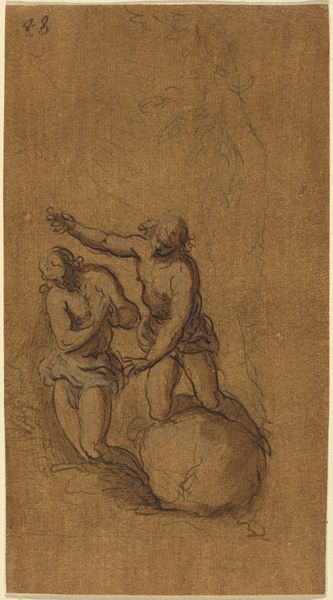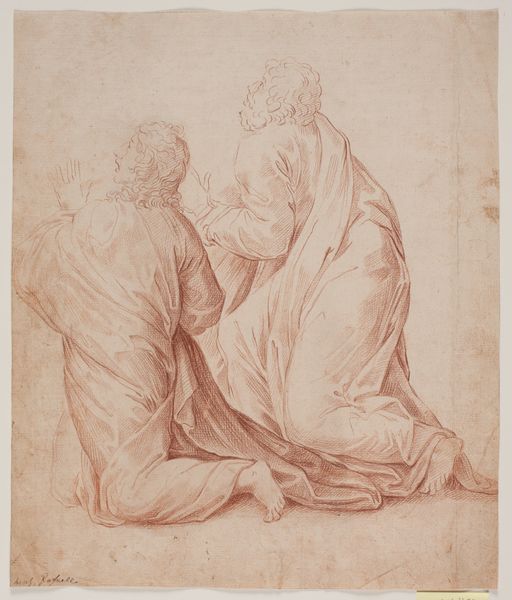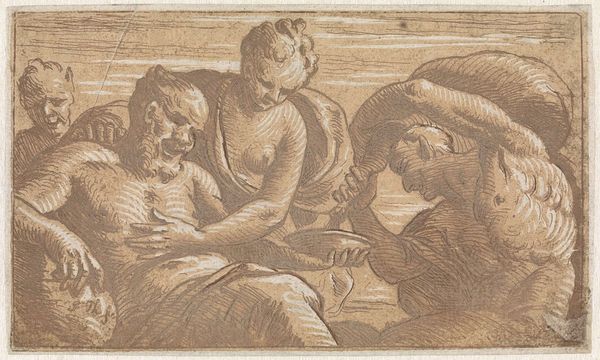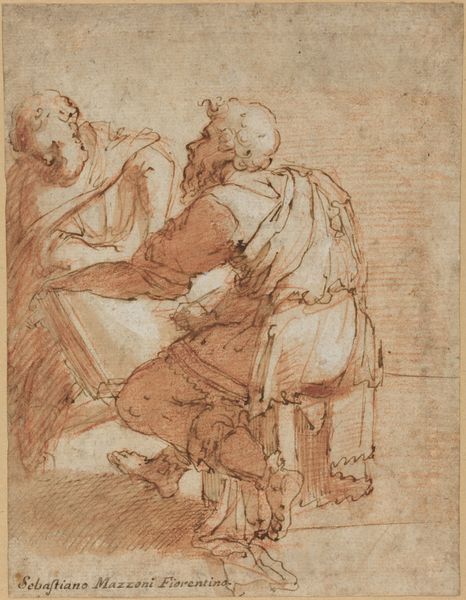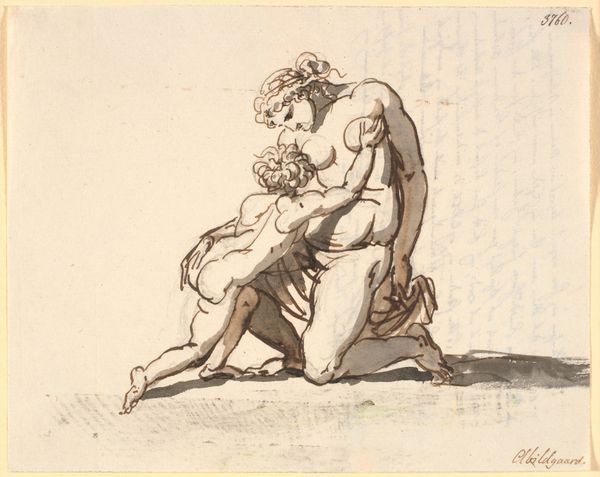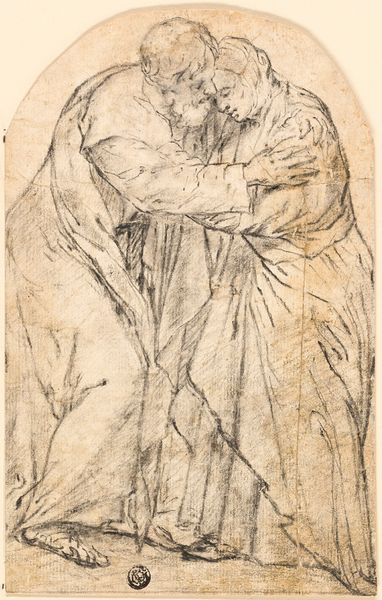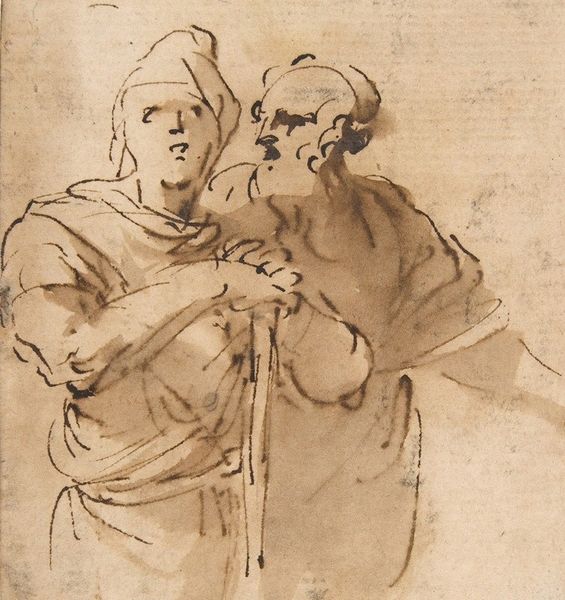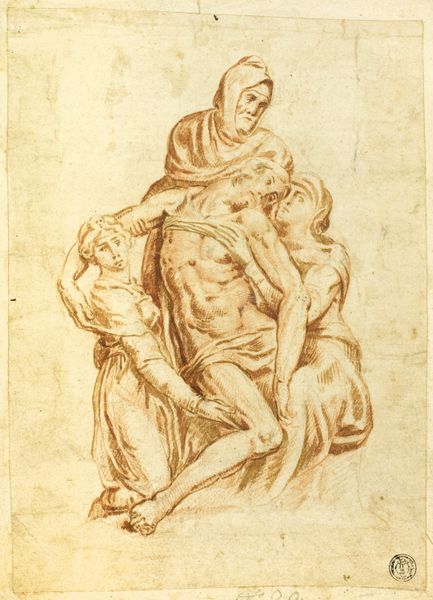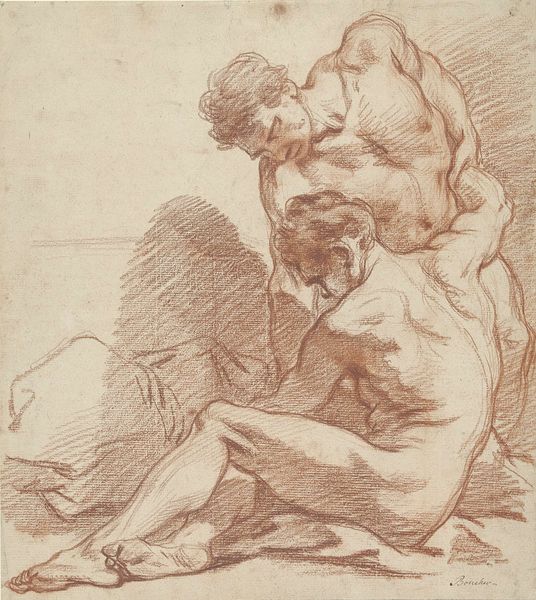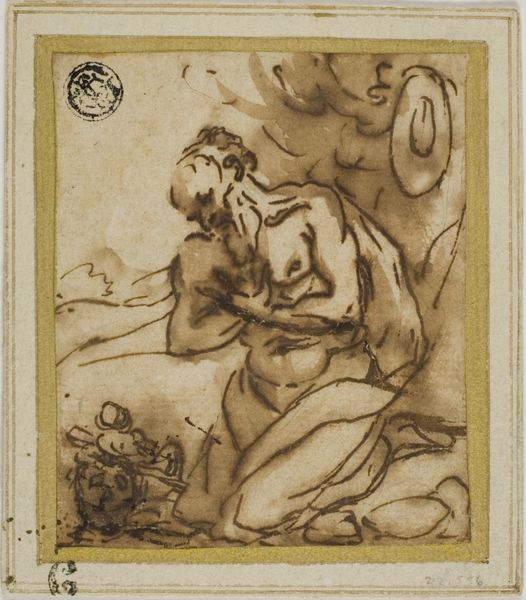
Family Group: Ozias, King of Judah, Nursed by his Mother n.d.
0:00
0:00
drawing, print, paper, ink, graphite, pen
#
portrait
#
drawing
# print
#
figuration
#
paper
#
11_renaissance
#
ink
#
pencil drawing
#
graphite
#
pen
#
history-painting
#
italian-renaissance
Dimensions: 143 × 109 mm
Copyright: Public Domain
Editor: This drawing is "Family Group: Ozias, King of Judah, Nursed by his Mother," by Michelangelo. It's rendered in pen, ink, and graphite on paper. The lines feel so fluid. What strikes me most is the composition—the figures are intertwined yet distinct. How do you approach analyzing such a piece? Curator: Let's focus first on the purely visual. Observe how Michelangelo uses line weight. Notice the heavier lines that define the contours of Ozias, immediately drawing our eye to the infant. This strategic deployment creates a hierarchy within the composition itself. Furthermore, consider the use of cross-hatching to create depth and shadow, especially in the drapery. Editor: So, the interplay of light and shadow isn't just representational; it’s integral to understanding the power dynamic? Curator: Precisely. And think about the implied lines – the gazes, the gestures. How do these formal elements contribute to the overall narrative, independent of our knowledge about the subject matter? Does the repetition of curved lines across the figure serve to visually bind them as a “Family Group” Editor: The formal language is speaking to a connection beyond the purely representational depiction. Curator: Indeed. Consider the negative space. Its placement isolates the subject and further draws focus. Are there any additional patterns or connections between the composition choices made, independent of subject matter that could further highlight the intrinsic beauty of Michelangelo's execution? Editor: It’s fascinating how deconstructing the visual elements can reveal a deeper meaning embedded within the structure of the piece itself. Thank you. Curator: My pleasure. Deconstruction is only the beginning of greater enlightenment!
Comments
No comments
Be the first to comment and join the conversation on the ultimate creative platform.
